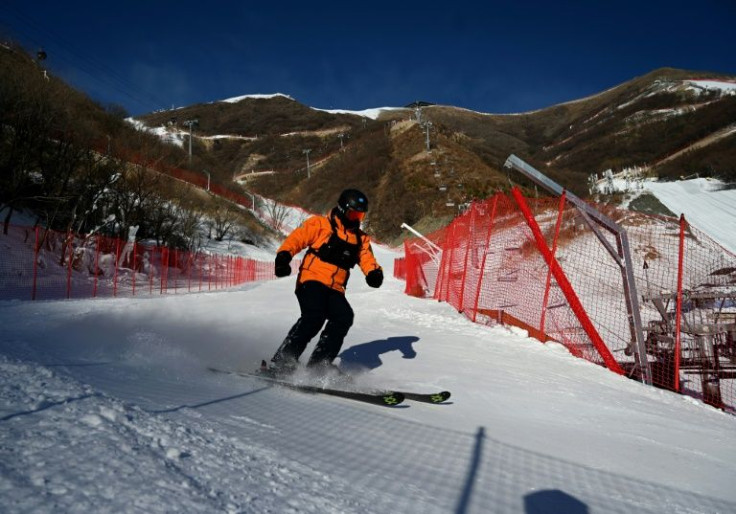Stunning Satellite Image Shows The Reality Behind China's 'Artificial' Winter Games
KEY POINTS
- The image was captured by NASA's Landsat 8 satellite on Jan. 29
- China had to bring in close to 400 snow guns costing roughly $83 million
- Many athletes voiced protest against artificial snow calling it dangerous
A satellite image of China's Winter Olympic venue captured by NASA's Earth Observatory showed heaps of artificial snow standing out against the rocky mountains, unraveling the real picture behind China's arrangement for the games.
Captured by the Landsat 8 satellite on Jan. 29, the image shows the Yanqing Olympic Zone on Xiaohaituo Mountain, located northwest of Beijing, reported Live Science.
This is the venue for sliding sports events like bobsled, skeleton and luge, and Alpine skiing, all of which require long tracks of snow or ice. However, the area received an average of only 1.3 inches (3.3 centimeters) of snow in February, said the report quoting NASA's Earth Observatory.
Following this, China had to bring in close to 400 snow guns at a cost of roughly $83 million, a staggering amount that makes it the first Winter Olympics that required virtually 100% artificial snow for all snow-based sports.
According to Time, organizers used almost 300 fan-powered snow guns and 83 lance-style snow guns from Italian firm TechnoAlpin.
"The output from those machines was easy to spot in satellite imagery of the area. On January 29, 2021, the Operational Land Imager (OLI) on Landsat 8 captured an image of the downhill trails covered with artificial snow. The water used to make the snow gets piped in from the nearby Foyukou and Baihepu reservoirs," NASA's Earth Observatory report said.
China winter Olympics: NASA imagery shows huge amounts of artificial snow used in Beijing https://t.co/diWIVR8ziN pic.twitter.com/4WIHqH7bCa
— World News (@Worldnews_Media) February 11, 2022
The use of artificial snow invited severe backlash from environmentalists and competing athletes. Though Chinese President Xi Jinping promised a "green" Winter Olympics, including the use of renewable sources of energy on all venues, hosting winter games in a city where the average temperature does not drop below freezing has raised concerns. The area also faces chronic water scarcity.
"To rely 100% on artificial snow does signal that the Olympics have landed in a place that is not climatically suitable," Madeleine Orr, a sports ecologist, was quoted by Time.
Many athletes too have come out against the artificial snow here, calling it dangerous. According to Estonian biathlete Johanna Taliharm, artificial snow is icier, therefore faster and more dangerous. "It also hurts more if you fall outside of the course when there is no fluffy snowbank, but a rocky and muddy hard ground," Taliharm said, as quoted by CBS Sports.
Chris Grover, head cross country coach for the U.S. Ski Team, agrees. "It can be really rock hard out there and falling can feel like falling on concrete, and so it does make it a little bit more dangerous than if it was natural snow conditions," he told The Globe And Mail.

© Copyright IBTimes 2025. All rights reserved.





















